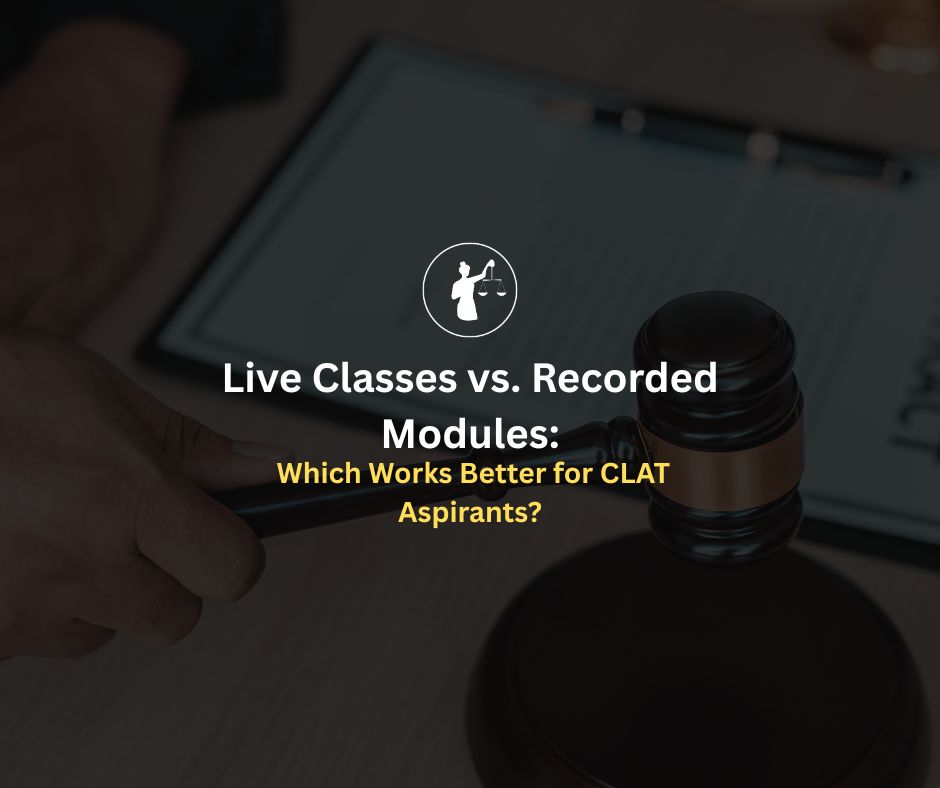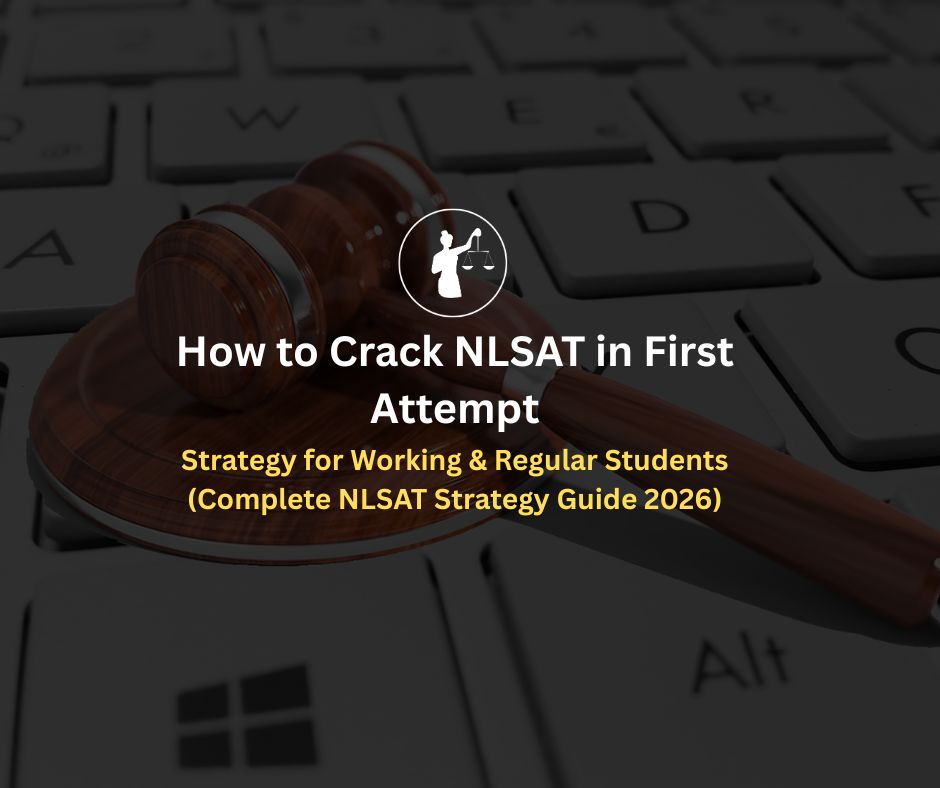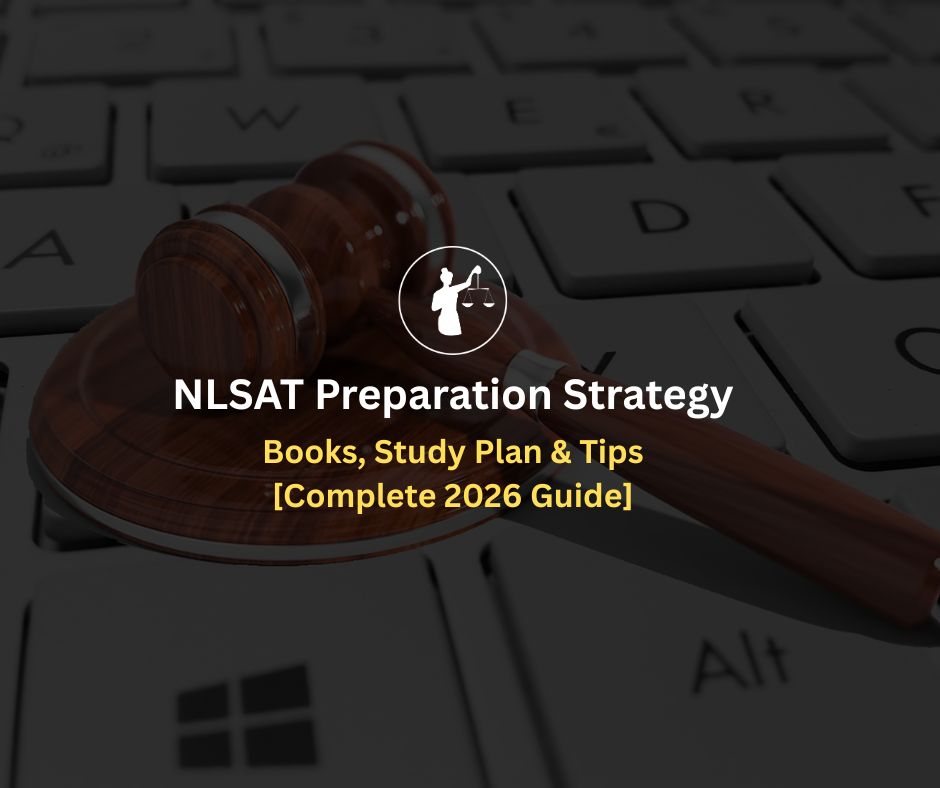The CUET PG LLB Syllabus serves as the foundation for aspirants preparing for the CUET PG DU LLB entrance exam, a highly competitive gateway to securing admission in prestigious law programs like LLB at Delhi University (DU). Each year, thousands of candidates appear for this exam, making it essential to have a well-structured preparation strategy.
A thorough understanding of the CUET PG LLB Syllabus helps aspirants streamline their studies, focus on high-scoring topics, and avoid wasting time on irrelevant material. It also provides clarity on the exam pattern, marking scheme, and subject-wise weightage, ensuring a strategic and efficient approach to preparation. By mastering the syllabus, candidates can significantly enhance their chances of scoring well, outperforming competitors, and securing a seat in their desired law program.
In this article, we will provide a detailed breakdown of the CUET PG LLB Syllabus, covering English Comprehension, General Knowledge, Computer Basics, Quantitative Aptitude, and Logical Reasoning. Additionally, we will share expert tips, book recommendations, and preparation strategies to help you ace the exam with confidence.
Book a free counseling Call with our experts
Without a clear understanding of the CUET PG LLB Syllabus, candidates often spend excessive time on irrelevant topics while missing out on high-weightage areas.
By knowing exactly what subjects and subtopics are covered, you can:
Prioritize important sections based on past trends.
Avoid unnecessary topics that won’t appear in the exam.
Create a structured study plan, focusing on subjects that require more attention.
When you know the CUET PG LLB Syllabus inside out, you can choose the right books, study materials, and online resources tailored to each section.
Instead of following generic law entrance books, you can:
Pick subject-specific books that match the CUET PG LLB exam pattern.
Use previous years' question papers to identify recurring topics.
Access focused online courses or coaching programs based on the actual syllabus.
The CUET PG LLB is a time-bound exam, and knowing the syllabus helps you:
Allocate time strategically to different sections based on difficulty levels.
Plan a balanced study routine, ensuring all subjects receive adequate attention.
Avoid last-minute panic, as you’ll have a clear roadmap for revision.
Also Read: CUET PG for DU LLB 2026 | Eligibility, Syllabus, Pattern, Preparation Tips, etc
Understanding the CUET PG LLB Syllabus directly impacts your performance and score. Here’s how:
If you’re aware of the syllabus and its scope, you can filter out tricky questions that are out of syllabus, avoiding negative marking.
A well-prepared candidate feels more confident during the exam, reducing anxiety and improving accuracy.
Mock tests and previous year papers are most beneficial when attempted with a syllabus-based approach.
Candidates who align their mock test practice with the CUET PG LLB Syllabus can track their strengths and weaknesses effectively.
Familiarity with the CUET PG LLB Syllabus allows you to analyze previous years' papers and recognize frequently asked topics.
It also helps in predicting potential question patterns, ensuring no surprises on exam day.
Download Last Year CUET PG Question Papers
The English/Hindi Comprehension section is a vital part of the CUET PG DU LLB syllabus that evaluates your ability to read, understand, and interpret passages in both English and Hindi. This section is designed to test your command over language and comprehension skills, which are crucial for success in the DU LLB Entrance Exam. A strong grasp of language skills is essential for aspiring law students, as it helps in understanding complex legal texts and arguments.
The General Knowledge/Awareness section of the CUET PG DU LLB syllabus is designed to evaluate your awareness of current events, historical facts, and general world knowledge. Mastery in this section requires staying updated on a variety of topics, as this is crucial for scoring well in the DU LLB Entrance Exam.
3. Computer Basics
The Computer Basics section of the CUET PG DU LLB syllabus tests your understanding of fundamental computer concepts. This part of the syllabus ensures that candidates possess essential computer knowledge, which is crucial in today's digital age.
The Quantitative Aptitude section of the CUET PG DU LLB Syllabus evaluates your numerical and mathematical skills. This section is crucial for assessing your problem-solving abilities and numerical understanding, which are essential for success in the DU LLB Entrance Exam.
The Logical Reasoning section of the CUET PG DU LLB Syllabus evaluates your ability to think critically and logically. This section is crucial for assessing your analytical thinking and problem-solving skills, which are essential for success in the DU LLB Entrance Exam.
Top Study Materials and Subject Wise Book Recommendations for CUET PG DU LLB.
By focusing on these key topics and employing these preparation strategies, you can effectively cover the Syllabus for DU LLB and excel in the CUET PG DU LLB Syllabus for Logical Reasoning.
A clear understanding of the CUET PG LLB Syllabus and exam pattern is essential for effective preparation. The CUET PG LLB 2025 exam follows a structured format that assesses candidates on various subjects relevant to law. Below is a detailed breakdown of the exam mode, duration, question format, and marking scheme.
The CUET PG LLB 2025 exam will be conducted in a Computer-Based Test (CBT) format. This means candidates will take the test on a computer at designated exam centers.
The total duration of the exam is 1 hour and 30 minutes (90 minutes), requiring efficient time management to attempt all questions within the allotted time.
The exam consists of 75 multiple-choice questions (MCQs), covering different sections as outlined in the CUET PG LLB Syllabus.
Each question carries 4 marks for a correct answer, making accuracy crucial.
A negative marking system applies: 1 mark is deducted for every incorrect answer, emphasizing the need for strategic answering to avoid unnecessary loss of marks.
Strategic Time Management – Knowing the number of questions and duration helps in planning how much time to spend on each section.
Avoiding Negative Marking – Since incorrect answers result in a penalty, being cautious and attempting only well-known answers can boost overall scores.
Focused Practice – Since the exam is based on MCQs, practicing similar question formats helps in improving speed and accuracy.
Preparing for the CUET PG LLB exam requires the right set of books and study materials.
Below is a subject-wise list of recommended books to help you ace the exam.
Objective General English by S.P. Bakshi (Arihant)
High School English Grammar & Composition by Wren & Martin
Word Power Made Easy by Norman Lewis
Practice comprehension passages from previous year law entrance exams
Samanya Hindi by Lucent Publications
Adhunik Hindi Vyakaran Aur Rachna by Dr. Vasudev Nandan Prasad
Practice sets for Hindi comprehension and grammar
Manorama Yearbook
Lucent’s General Knowledge
Daily newspaper reading (The Hindu, Indian Express)
Monthly Current Affairs Magazines (Pratiyogita Darpan, Vision IAS Monthly)
PIB (Press Information Bureau) & Government reports
Legal Awareness and Legal Reasoning by A.P. Bhardwaj
Constitution of India (Bare Act) by Universal Publications
Introduction to the Constitution of India by D.D. Basu
Legal aptitude and reasoning practice books
A Modern Approach to Logical Reasoning by R.S. Aggarwal
Analytical Reasoning by M.K. Pandey
Quantitative Aptitude for Competitive Examinations by R.S. Aggarwal
Practice sets for logical puzzles and data interpretation
Computer Awareness by Arihant Experts
Objective Computer Awareness by R. Pillai
NCERT Computer Science (Class 6-10)
British Council – Learn English Grammar & Comprehension
Grammarly Blog – Grammar & Writing Tips
Testbook English Quizzes – Free Practice Tests
NCERT Hindi Grammar Books – Download Free PDFs
Jagran Josh
OnlineTyari Hindi Quizzes
The Hindu
PIB (Press Information Bureau)
GKToday
AffairsCloud
4. Legal Aptitude & Constitution of India
Live Law
PRS Legislative Research
Legal Bites
EduGaps Legal (YouTube)
Indiabix
Testbook Reasoning Quizzes
Free Online Tests
Unacademy Free Courses
GeeksforGeeks
TutorialsPoint
Free Lessons on Computers
Technical Guruji (YouTube)
NTA Official Website
CLAT NLTI
Oliveboard
Testbook CUET PG Mock Tests
Understanding the CUET PG DU LLB Syllabus is essential for any candidate aiming to excel in the DU LLB Entrance Exam. By breaking down the syllabus into its key components English/Hindi Comprehension, General Knowledge/Awareness, Computer Basics, Quantitative Aptitude, and Logical Reasoning you can tailor your study strategy to cover all necessary areas effectively.
By employing targeted study methods and consistently practicing across these topics, you can navigate the CUET PG DU LLB syllabus effectively and perform well in the entrance exam.
Start your preparation early, stay disciplined, and use the right resources to ensure you're well-prepared on exam day.
With a strategic approach and dedicated effort, success in the CUET PG DU LLB exam is within your reach.
Preparing for the CUET PG LLB syllabus requires more than just effort—it demands a strategic approach. A personalized study plan helps you stay consistent, make steady progress, and manage the syllabus efficiently over time.
Studying regularly for a few hours each day is more productive than long, irregular study sessions.
Consistent learning improves retention and reduces last-minute stress.
It helps you stay in touch with all subjects and build confidence gradually.
Segmenting the CUET PG LLB syllabus into weekly goals ensures structured progress.
Begin by analyzing your strong and weak areas across the four sections.
Allocate more time to difficult topics but ensure regular revision of stronger areas.
Three-Month Plan (For students starting closer to the exam date):
Month 1
Cover foundational topics from all sections.
Focus on reading comprehension, basic logical reasoning, and static GK.
Start maintaining a daily current affairs journal.
Month 2
Increase practice across all subjects using MCQs and quizzes.
Introduce weekly mock tests.
Begin revising previously covered topics alongside new content.
Month 3
Focus on complete syllabus revision and mock analysis.
Practice full-length tests under timed conditions.
Prioritize frequently asked or high-weightage topics.
Six-Month Plan (For early starters or working students):
Months 1–2
Build concepts at a steady pace, covering each section gradually.
Read newspapers or news apps for 30 minutes daily.
Start basic vocabulary and grammar work.
Months 3–4
Shift focus toward application and regular practice.
Begin solving previous year questions.
Take one mock test every weekend and analyze performance.
Months 5–6
Dedicate time to complete revision.
Focus on weak areas and refine exam strategy.
Attempt full-length mocks every 3–4 days in exam-like conditions.
A well-balanced plan must include:
Concept Learning
Allocate daily slots to new topics and theory-based learning.
Practice
Regularly solve questions from past papers and mock tests. Practice daily for reasoning, comprehension, and computer basics.
Revision
Schedule weekly and monthly revisions. Use short notes or flashcards for last-minute review.
Efficient time management is key to covering the CUET PG LLB syllabus thoroughly without feeling overwhelmed.
Here are some simple but effective strategies:
Use focused study intervals like the Pomodoro technique/
Helps maintain concentration and prevents fatigue.
Set aside one day per week for revision of previously studied topics.
Take at least one mock test every two weeks in the beginning, increasing to weekly in the final months.
Use mock test analysis to identify time-wasting patterns.
Schedule short breaks between study blocks and take longer breaks after 2–3 hours of study.
Engage in a hobby or light physical activity daily to recharge.
Maintain a proper sleep routine for better focus.
Learn More About CUET PG DU LLB
The CUET PG LLB syllabus includes Legal Aptitude & Constitutional Law, English Language, General Knowledge & Current Affairs, Logical Reasoning & Analytical Ability, and Computer Basics.
While NTA does not officially specify weightage, typically, Legal Aptitude & GK have a higher emphasis, followed by English, Logical Reasoning, and Computer Basics.
The exam consists of Multiple Choice Questions (MCQs) based on legal knowledge, comprehension skills, logical reasoning, and general awareness.
Key topics include:
Indian Constitution (Fundamental Rights, Directive Principles, Judiciary)
Law of Torts, Contract, and Criminal Law Basics
Legal Reasoning & Important Doctrines
Focus on:
Current affairs (legal, national, and international)
Indian Polity & History
Major Supreme Court judgments
Use sources like Lucent’s General Knowledge and Manorama Yearbook.
Legal Awareness and Legal Reasoning
Introduction to the Constitution of India
Objective General English
A Modern Approach to Logical Reasoning
Yes, one mark is deducted for every incorrect answer, while four marks are awarded for each correct answer.
The syllabus remains similar but now follows the CUET pattern, emphasizing MCQs rather than subjective legal reasoning.
You can access previous year papers and mock tests on:





